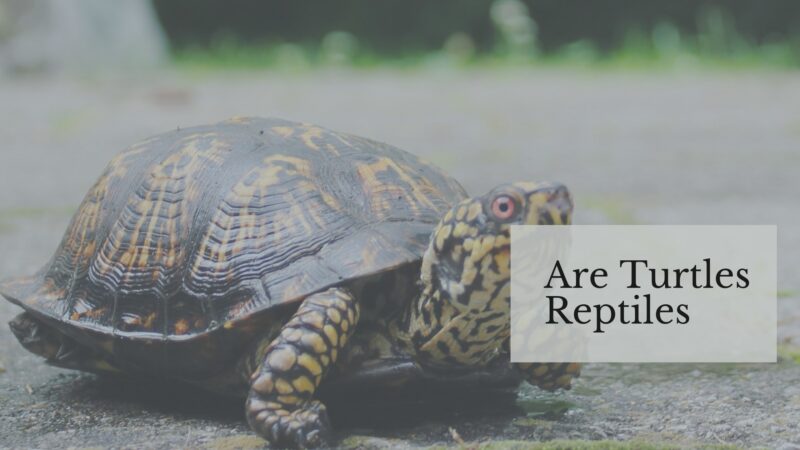I believe we’ve all gained slightly bigger interest in turtles ever since we watched Ninja Turtles, right? With their distinctive shells and slow, deliberate movements, they seem like they have their own Universe. But what exactly are they, and where do they fit in the vast realm of the animal kingdom?
Their world is incredibly diverse, with a range of species occupying various habitats across the globe. At first glance, it might seem like an obvious answer—of course, turtles are reptiles!
Yet, as we delve deeper into their remarkable traits and behaviors, we will discover the intricacies that set them apart from other reptiles and even challenge traditional classification.
Reptiles
To grasp the classification of turtles within the reptile group, we must first understand what defines reptiles as a whole. Reptiles are a class of cold-blooded, ectothermic vertebrates, meaning their body temperature is influenced by the external environment.
This adaptation allows them to conserve energy, and as a result, they can survive in environments where warm-blooded animals might struggle. Reptiles are characterized by their dry, scaly skin, which provides protection from dehydration and aids in their terrestrial existence.
Unlike mammals and birds, reptiles lay eggs, and their offspring often emerge as miniature replicas of their parents. While turtles share these reptilian traits, their shell is the defining feature that distinguishes them from other reptiles.
Common Groups and Their Distinctions
The reptile class is diverse and includes several distinct groups. Among the most well-known are the snakes, lizards, crocodilians, and tuataras. Snakes, known for their limbless bodies and venomous fangs, have evolved unique adaptations for locomotion and hunting.
Lizards, with their elongated bodies and scaly tails, occupy a variety of habitats, from deserts to rainforests. Crocodilians, including alligators and crocodiles, are large, semi-aquatic reptiles with powerful jaws and a fearsome reputation.
The tuatara, found only in New Zealand, is a living fossil and holds a special place in the reptilian family tree. In the following sections, we will explore how turtles fit within this diverse reptile classification and what makes them distinct from their fellow reptilian counterparts.
Shelled Reptiles
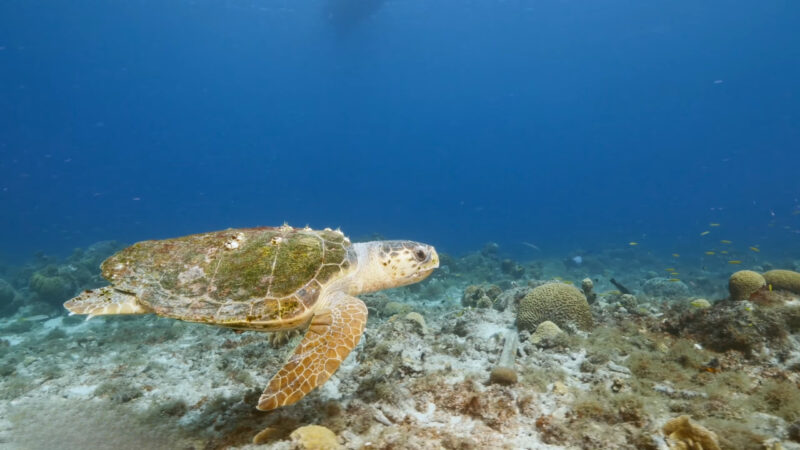
Turtles represent a diverse group of reptiles with a history spanning over 200 million years. They can be found in a wide range of environments, from tropical rainforests and temperate woodlands to deserts and freshwater habitats.
Their defining feature, the shell, acts as both armor and shelter, providing them protection against predators and harsh conditions. Interestingly, the shell is an integral part of their skeleton, offering a unique insight into their evolutionary history.
With over 360 recognized species, turtles exhibit a wide array of shapes, sizes, and colors, each adapted to their specific ecological niche.
Their Habitats, Characteristics, and Adaptations
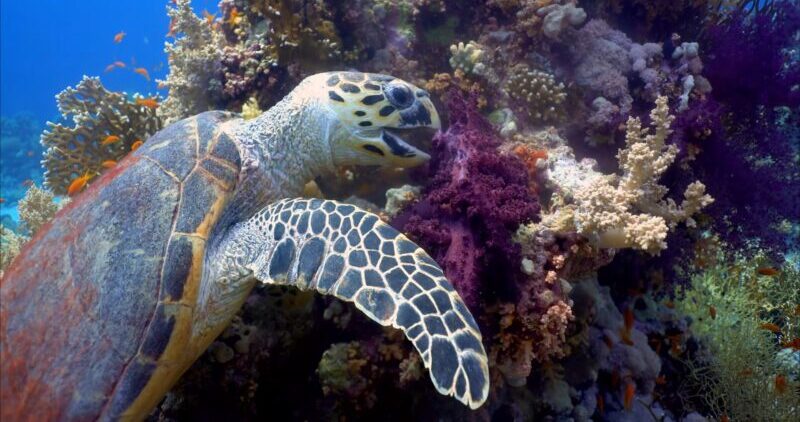
Turtles have mastered the art of adaptation, allowing them to thrive in various environments. Aquatic turtles possess webbed feet and streamlined shells, perfect for gliding gracefully through the water. On the other hand, terrestrial turtles often have sturdier limbs and domed shells, providing better protection against terrestrial predators.
Some species have evolved to withstand extreme temperatures, while others have specialized diets that suit their specific habitat. One remarkable adaptation found in certain species is the ability to breathe through their skin, enabling them to remain submerged for extended periods without needing to surface for air.
The Classification of Turtles
To understand where turtles fit within the vast animal kingdom, we turn to taxonomy—the science of categorizing living organisms based on their evolutionary relationships. Turtles belong to the class Reptilia, placing them in the same group as lizards, snakes, crocodilians, and tuataras.
Within the class Reptilia, turtles are further classified into the order Testudines. This order is subdivided into two suborders: Cryptodira, which includes most of the modern turtle species, and Pleurodira, a smaller group found mainly in freshwater habitats of the Southern Hemisphere.
This intricate classification system helps us recognize the diversity and evolutionary history of turtles, showcasing their unique place in the reptile family.
Their Scientific Order and Family
As we dive deeper into this classification, we find more specific groupings that help us understand their relationships with other species. The order of Testudines is divided into various families, each representing distinct lineages of turtles.
Some well-known families include Cheloniidae, which comprises sea turtles, Emydidae, encompassing pond and river turtles, and Testudinidae, housing tortoises. Each family displays characteristic traits and behaviors, adapted to their respective habitats.
For example, sea turtles have streamlined bodies and powerful flippers for efficient swimming in the open ocean, while tortoises possess sturdy limbs and high-domed shells suited for life on land.
Comparison to Other Reptiles
When comparing turtles to other reptiles, it becomes evident that they share essential reptilian traits, such as cold-bloodedness, scaly skin, and laying eggs. However, the defining feature that sets turtles apart is their unique shell.
The shell is a modification of the ribcage and spine, forming a protective bony structure covered by keratinized scutes, or scales. While the shell offers unmatched protection, it also comes with some constraints, impacting the mobility of turtles compared to other reptiles.
Unlike lizards and snakes, turtles cannot simply shed their skin as they grow, leading to a slower rate of growth. Nevertheless, the shell has proven to be an evolutionary success, as evidenced by the ancient lineage of turtles that has persisted for millions of years.
Shell Structure and Evolution
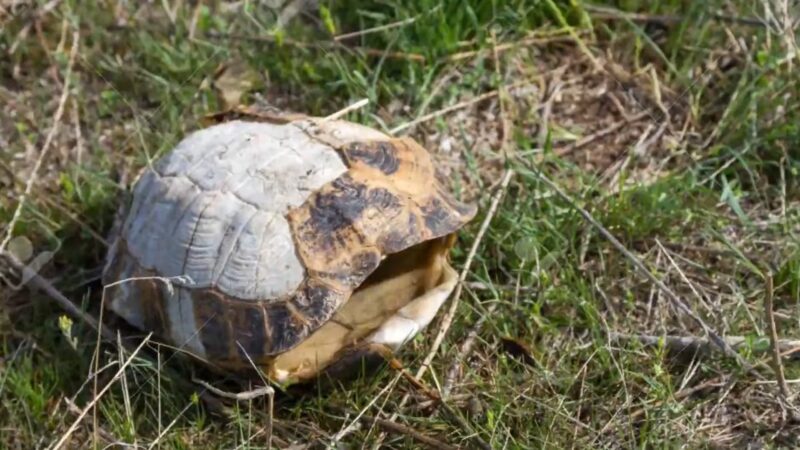
The turtle’s shell is a remarkable adaptation that has puzzled scientists and fascinated nature enthusiasts for centuries. It serves as both armor and sanctuary, providing a safe retreat from potential threats. The shell’s evolution is thought to have originated from an ancestral group of reptiles over 200 million years ago.
As the need for protection increased, some reptiles developed bony plates on their backs, eventually leading to the fully developed shell we recognize today. This unique feature has proven to be a successful defense mechanism, allowing turtles to endure throughout various geological epochs and adapt to changing environments.
How the Shell Impacts Their Behavior and Survival
The shell’s protective benefits influence various aspects of turtle behavior and survival strategies. When threatened, turtles can retract their head, tail, and limbs within the shell, reducing their exposed body surface and safeguarding their vital organs.
This defense mechanism is especially effective against predators that rely on quick strikes or bites. However, the shell’s rigidity also limits the range of movement for turtles, particularly when compared to other reptiles.
Some terrestrial species have developed the ability to retract their limbs partially, helping them navigate their environments more efficiently. Additionally, the shell’s weight can impact buoyancy in aquatic turtles, influencing their diving and swimming capabilities.
Despite these limitations, the shell has proven to be an essential survival tool, allowing turtles to thrive in diverse habitats worldwide.
The Reptilian Nature of Turtles
Beyond the physical attributes of the shell, turtles exhibit several other behaviors and traits that firmly place them within the reptilian group. Like other reptiles, turtles are ectothermic, meaning they rely on external heat sources to regulate their body temperature.
This adaptation allows them to conserve energy and survive in environments with fluctuating temperatures. Furthermore, turtles lay eggs rather than giving birth to live offspring, a characteristic shared with other reptiles such as snakes and lizards.
The nesting and hatching behaviors of turtles highlight their remarkable reproductive strategies, which can vary significantly among species. Overall, these reptilian traits form a cohesive picture of turtles as integral members of the class Reptilia.
Scientific Debates
As with any scientific classification, there are ongoing debates and discussions about the finer details of turtle biology and evolution. The exceptions observed in some turtle species challenge traditional views on reptilian characteristics, sparking inquiries into their ancestry and relationships with other reptiles.
While they undeniably fall within the reptile family, there are some unique features in certain species that challenge traditional classification. For instance, the leatherback sea turtle (Dermochelys coriacea) exhibits an interesting characteristic not found in other reptiles—endothermy or the ability to regulate body temperature internally.
The leatherback can maintain its body temperature higher than the surrounding water, allowing it to explore colder ocean depths that other sea turtle species cannot endure. This remarkable adaptation sets the leatherback apart from most reptiles and raises intriguing questions about the evolution of thermal regulation.
Researchers and taxonomists continually study the genetic makeup and physiological traits of turtles to gain a comprehensive understanding of their place in the reptile family tree. The study of these exceptional features opens new avenues for scientific exploration and fosters a deeper appreciation for the intricacies of life’s diversity.
How did They Thrive in Various Environments?
Throughout their extensive evolutionary history, turtles have displayed a remarkable ability to adapt to diverse environments. Their reptilian attributes, such as ectothermy and the protective shell, have allowed them to inhabit a wide range of habitats, from hot deserts to cold mountain streams.
Aquatic turtles, with their streamlined bodies and webbed feet, are perfectly suited for life in lakes, ponds, and oceans. They have developed unique strategies for navigating aquatic environments, including basking in the sun to regulate their body temperature and diving to forage for food.
Terrestrial turtles, on the other hand, have evolved sturdy limbs and high-domed shells, enabling them to endure life on land, from tropical rainforests to arid grasslands. The diversity of turtle species and their ability to adapt to various environments are a testament to their success as reptiles.
The Galápagos tortoises (Chelonoidis spp.) are an iconic example of turtles adapting to different ecosystems. These giant tortoises inhabit the Galápagos Islands, where they have diversified into various subspecies, each suited to the specific conditions of their respective islands.
Some have long necks to reach vegetation higher up in trees, while others possess dome-shaped shells for easier maneuvering in dense vegetation. Another fascinating example is the matamata turtle (Chelus fimbriatus), found in South America.
This unique species thrives in slow-moving, murky waters and has developed a specialized snorkel-like snout that allows it to breathe without fully exposing its head above water. These examples illustrate the incredible adaptability of turtles and how they have carved out niches in a variety of environments over millions of years.
Their reproduction and Lifestyles
Turtle reproduction is a captivating aspect of their lives, deeply intertwined with their habitats and behaviors. Most turtle species exhibit sexual dimorphism, where males and females have distinct physical traits. This is often related to their roles in courtship rituals and mating behaviors.
Many species engage in elaborate courtship displays, with males showcasing their colors and courtship dances to attract females. After successful mating, females typically seek out suitable nesting sites, often returning to the same beaches or areas where they were hatched.
Once the eggs are laid, the females leave them to incubate in the sand or soil, where temperature and humidity play crucial roles in determining the sex of the hatchlings. While turtle reproduction shares similarities with other reptiles, such as egg-laying and sexual dimorphism, there are also notable differences.
For instance, crocodilians exhibit parental care, with mothers guarding their nests and sometimes carrying hatchlings to water, while some snake species give birth to live young. These variations in reproductive strategies reflect the diverse ways in which reptiles have adapted to their environments and evolved to ensure the survival of their offspring.
Threats and Conservation of Turtles
Despite their remarkable adaptations, turtles face numerous threats to their survival. Human activities, such as habitat destruction, pollution, and overexploitation, pose significant risks to turtle populations worldwide.
Additionally, climate change and rising global temperatures are altering nesting habitats, influencing the sex ratios of hatchlings, and potentially impacting entire turtle populations. Moreover, turtles are vulnerable to accidental capture in fishing gear, leading to bycatch mortality.
Thankfully, conservation efforts for turtles have gained momentum in recent years. Many organizations, governments, and dedicated individuals are working tirelessly to protect and restore turtle habitats, implement sustainable fishing practices, and raise awareness about the importance of these reptiles in our ecosystems.
Some initiatives focus on captive breeding and releasing hatchlings back into the wild, while others involve community-based conservation programs that actively engage local populations in safeguarding turtle habitats.
Human Interactions and Perceptions
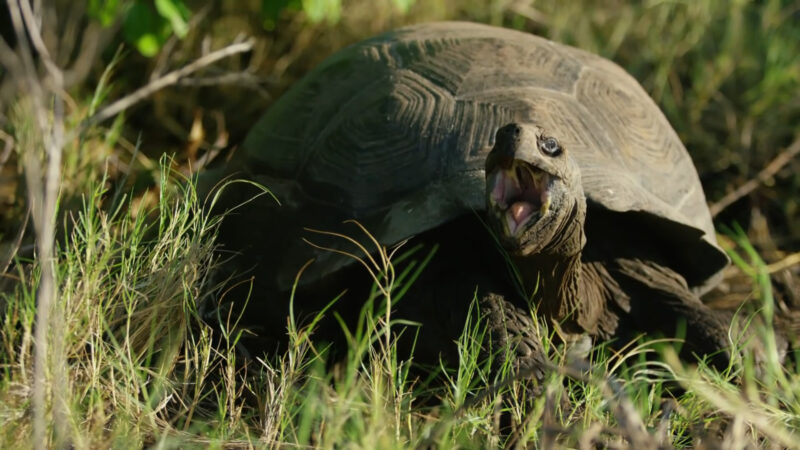
Turtles hold a special place in the cultural beliefs and mythology of various societies around the world. In some Native American cultures, the turtle symbolizes Mother Earth and is associated with creation and longevity.
In Chinese mythology, the tortoise represents longevity, and its shell is associated with the celestial forces of heaven and earth. In Hindu mythology, the world is said to rest on the back of a giant turtle, symbolizing the foundation of life.
These cultural perceptions and connections with turtles highlight the significant role these reptiles have played in shaping human imagination and understanding of the natural world. Throughout history, humans have interacted with turtles in various ways, and these interactions have had both positive and negative effects on turtle populations.
In some cultures, turtles are hunted for their meat, eggs, and shells, leading to population declines and threats to endangered species. On the positive side, many communities and conservation organizations have recognized the importance of protecting turtles and their habitats.
Education and awareness programs have been instrumental in changing attitudes and behaviors towards turtles, leading to more sustainable practices and protection measures.
FAQs:
How do turtles find their way back to their nesting grounds?
They use innate navigational abilities, possibly relying on Earth’s magnetic fields and environmental cues to return to their nesting sites.
Can they communicate with each other?
Turtles use visual cues, body postures, and vocalizations to communicate with one another.
Can turtles regenerate lost body parts?
Some species have limited regenerative abilities, such as regrowing damaged tails.
How long can they live?
The lifespan of turtles varies among species, but some can live for well over 100 years.
Do turtles have scales like other reptiles?
Yes, they have unique bony plates called scutes that form their shell, which acts as their “scales.”
Conclusion
Defined by their fascinating adaptations, such as their protective shells, ectothermic nature, and egg-laying behavior, turtles undoubtedly belong to the class Reptilia. Through their diverse habitats, reproductive strategies, and resilience to various environments, turtles demonstrate the enduring success of reptilian traits.
While some species challenge traditional classification with exceptional features, these enigmas only serve to deepen our understanding of the evolutionary journey of these ancient creatures. From mythology and folklore to scientific research and conservation efforts, humans and turtles have shared a profound relationship throughout history.
Related Posts:
- How Do Wild Horses Survive? - A Fascinating Study
- Why Do Dolphins Jump Out of the Water? - Unique and…
- How Many Stomachs Does a Cow Have? - Explained!
- How Do Whales Breastfeed Underwater? - Marine Mammal…
- How Does the Greenlash Impact the Casino Industry in…
- How Do Reptiles Breathe? - Respiratory Structures…


